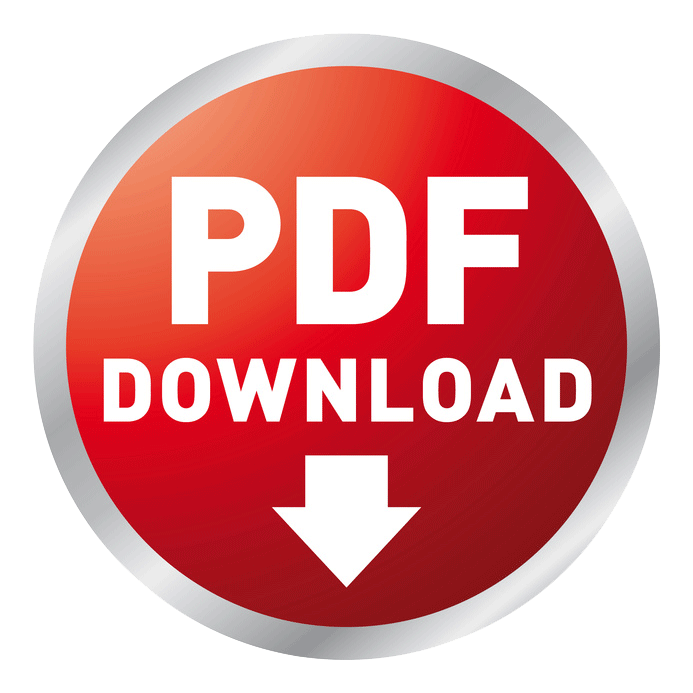— [http://goo.gl/wiqeCZ] How to Teach Higher-Order Cognitive Strategies._______________________Education, pedagogy
:: RT: http://goo.gl/wiqeCZ Writing five-paragraph essay on
scaffolding students’ writing in the ESL classroom at lower secondary school in Norway | #Essay #ESL #Education #Pedagogy #English #StudyNotes #UniversityStudies #ELLs #Scaffolding
This paper focuses on how to scaffold students in the ESL classroom at lower secondary school in Norway.
An argument is mainly about logical appeals and involves claims, evidence, warrants, backing, and rebuttals. Argument is at the heart of critical thinking and academic discourse; it is the kind of writing students need to know for success in college and in life.
Many scaffolds are excellent for all types of learners—English Language Learners (ELLs), English as a Second Language Classroom (ESL), students with special needs and/or students who are just generally challenged by writing.
Not only are
scaffolds useful for teaching well-structured skills, but they also provide the support students need to tackle higher-level thinking strategies.
Five-paragraph essay on scaffolding students’ writing at lower secondary school in Norway, 2015; Pedagogy, Benjamin Madeira, PDF ::

Scaffolding students’ writing ::
The composition of a classical classroom is experiencing growing diversity in modern societies. Despite the fact that students born in the technology-based digital age are writing more than ever before, neither their teachers nor their parents give them enough credit for their writing outside the classroom. As technology evolves at a rapid pace, adolescents’ knowledge keeps on scaling every day in the practical part of digital development, and many traditional educational centers cannot meet modern students’ expectations; thus, the increased diversity in the classroom is a major challenge to most teachers (Krokan n/p, 2008). From a pedagogy perspective, the challenge that educators face is the acquisition of tools designed to help them focus on the explicit teaching of the different forms of multimodal texts which require skillful and continuous learning while designing learning experiences for modern students that can scaffold ESL learners’ writing.
Adolescent students today write more than ever ::
Undoubtedly, young people today write far more than any generation before them. Modern ESL students are the living versions of the Swedish bank Skandiabanken (Krokan 19); their digital functionality is running 24 hours a day throughout the year. In fact, the digital platform Its Learning utilizes built-in sound and video recorder, and other amazing functionalities to help teachers meet students’ digital expectations (ItsLearning.co.uk 28; ItsLearning.com 1-18). Unlike speaking, listening and reading, most of the modern ESL learners need more guidance in acquiring writing skill successfully. Most of the ESL students have learned the technical skills of touching, scrolling or clicking, but they need to be taught how to discriminate between non-relevant information in the new digital literacies. Too often, however, ESL teaching strategies in Norwegian schools have tended to rely heavily and almost exclusively on traditional textbooks, focusing on extensive formal texts of a certain length, such as essays, films and book reports, rather than using the tools students are most familiar with, such as SMS, chat, email or their favorite social networking and visual effects while utilizing platforms such as the online word processing platform Google Docs, Blogger, WordPress, YouTube, Instagram, Twitter, Facebook, Vine, PowToon, StoryBird, Periscope, and much more digital possibilities.
Teachers don't want to go beyond the traditional schoolbooks ::
No feature of teaching is considered with more unease in the ESL classroom than going beyond the traditional schoolbooks and actively engage with authentic modern literacy strategies by using laptops, smartphones, flipcams, touchscreen displays and other hand-held devices. The revised Knowledge Promotion Reform (2013), which is the main framework for the didactic work in Norwegian schools (KL06 1-6), requires that ESL teachers give their students various assignments, emphasizing the use of different writing strategies in the ESL classroom. Thus, being ESL a school subject with a vast potential for variation, adolescent students will learn English by using “different situations, working methods and learning strategies” (KL06 8); they will learn English by commenting on own written work so they can, for instance, persuade a particular audience not only at school but also outside the ESL classroom.
Learning the English language occurs while encountering a diversity of texts ::
Textbooks are, therefore, no longer sufficient as the only teaching material in ESL classrooms, particularly given the advances in technology-based writing habits many ESL students possess. The Norwegian national curriculum also points out that learning the English language "occurs while encountering a diversity of texts, where the concept of text is used in the broadest sense of the word" (KL06 2). Moreover, [i]t involves [...] written representations in different combinations and a range of [...] written texts from digital media" (KL06 2). Teachers’ reliance on a textbook, starting on the first page and continuing chapter by chapter, lesson by lesson, can quickly suffocate motivation in students. Educators need to meet their students’ needs by realizing that ESL learners are currently in a particularly rich and prolific phase when it comes to writing. Utilizing students’ prior knowledge on technological literacy can provide the inspiration necessary to create texts.
Teachers need to embrace new modern literacy pedagogy ::
However, in order to foster best students' performance in ESL writing today, mentors need to embrace new modern literacy pedagogy. In a digital world, no classroom will achieve good results without incorporating technology into every aspect of its everyday practices. Teachers need to incorporate educational technologies into the curricula; they need to learn appropriate skills, strategies, and insights in how to use multimedia in teaching in order to achieve the communicative functions of modern texts (Asselin 1-2). In multiple literacies, multimodal, interactive, technology-mediated learning formats give educators both educational challenges and opportunities. On the one hand, teachers have new opportunities to present multiple representations of content, such as text, video, audio, images, interactive elements. On the other hand, ESL learners can be extremely confident about their internet use while lacking evaluative and critical capabilities (Erstad 57-59; Asselin 3). ESL educators will scaffold their students in the use of "digital tools and other aids to find relevant information and to create different types of texts"(LK06 3-4) within the areas of lexis, orthography, idiomatic structures, paragraphing and grammatical patterns. Modern educators need to provide students with successive levels of temporary support that help them reach higher levels of comprehension and skill acquisition in “multiliteracies” (DeVoss 29), the ability to utilize technology and multimedia (Normann lesson 6; Erstad 60; Kalantzis 196-203).
Writing something down requires motivation ::
In order for something to be readable, someone has to write it, and writing something down requires motivation, and motivation comes easier when one has a background knowledge of how things are done. Therefore, their ESL teachers can provide the students with assignments that allow for choice (Whitaker 3) as this “generates writing motivation” (Gallagher 91). Students will use “general vocabulary related to different topics [...], also use own notes and different sources as a base for writing” (LK06 9) such as templates or writing frames and model-writing (Lewis & Wray 2). They will be able to express ideas and opinions in well-structured and coherent texts (LK06 8-9). When choosing what to write about, students can write about movies, song lyrics, ads, newspapers, favorite food, an ideal vacation, favorite app, or any other topics they can think of (Normann Lesson 1).
A student-centered instruction ::
Learning has a number of different ways of approaching it. When it comes to learning how to write in the ESL classroom, it is either focused on teachers and instruction or in a student-centered instruction where scaffolding takes place. In a student-centered instruction, ESL students are given freedom of expression and are allowed to use their imagination. Instructional scaffolding permits the teacher to assist students use what they know and progressively change from over depending on others to be con¬fident and autonomous performers. Teachers scaffold students so these are able to "use [...] writing strategies," "understand and use a vocabulary related to [both] familiar [and general] topics" (LK06 7, 9). Students will also learn how to "take notes to create different types of texts" and "write coherent texts that narrate, retell and describe experiences and express own opinions" (LK06 3-4). Scaffolding, therefore, is a systematic process that offers ESL learners, who have difficulties in writing and reading, the required guidance until the students understand their task of completing the class assignments and work without the help of others (Lewis & Wray 1-3). Scaffolding can be applied by an advanced partner, such as an instructor, the teacher or a fellow student –peer-to-peer feedback– so other students become "aware of the strategies that are used to learn [the English] language, and strategies that help [them] to understand and to be understood," only then "the acquisition of knowledge and skills becomes easier and more meaningful" and it can also "be an important part of [their] personal development" (LK06 2).
Modeling effective writing ::
In a pedagogical ideal environment, when embarking on a writing activity, ESL teachers scaffold their students by modeling effective writing, particularly when the writing is in draft form. By doing this, "teachers model respect for themselves, for their students, and for the act of writing itself" (Whitaker 2). Before embarking on an extensive writing project, ESL teachers should scaffold their students in “repetitive activities and through working with easy, familiar material” (Nation 94-95; 113-114) not only individual writing but also “group composition where three or four learners work together to produce a piece of writing that is superior to what any one of the group could do alone” (Nation 98). As time goes by, or when students are in a higher level of their studies, they can also produce texts by comparing professional written texts. However, when scaffolding eighth or ninth-grade students in producing a text, students should receive first some easy models of comparable texts for them to study, produced by other students. The examples of work by other students are less expert than those written by professionals but they are “more approachable and often more imitable” (Haynes 52). When modeling a writing activity, "[t]he teacher remains in the background during this phase, only providing language support if required" (Steele 1-2). Scaffolding emphasizes active participation or a greater degree of control from students over their writing in the ESL classroom.
Conclusion ::
Digital technology in learning is rapidly growing as some teachers realize the effectiveness of different literacies that shift with contexts, texts, and the identities of people using literacy (Anderson 59; Rowsell 55). Tutor guidance remains critical. Individuals born since the mid-1990s make up a larger percentage of the digital generation(s); most of teenagers today possess technological literacy knowledge but they still need digital competence (Erstad 58-59, 68-69; Asselin 5-12). Technological literacy does not ensure that reflection and learning take place. The educator should be able to guide students on information, visual and media literacy –how to critically write creative pieces (Normann lesson 6). In a student-centered instruction, students learn to collaborate and communicate with one another. Furthermore, this approach helps to create partnership between the students and their teacher; students and teachers interact equally.
SHARE: FACEBOOK | TWITTER
Scaffolding for English-language learners ::
Fuente: Youtube, Servicios de Internet | Source: Youtube, Video hosting service
Scaffolds for Writing: examples of different types of scaffolds or writing frameworks that assist English-language learners to build their writing skills. Elizabeth Coelho:
Fuente: Youtube, Servicios de Internet | Source: Youtube, Video hosting service
ESL Classroom Strategies:
Fuente: Youtube, Servicios de Internet | Source: Youtube, Video hosting service
WORKS CITED — REFERENCES :
• [1] Asselin, Marlene, and Ray Doiron. Towards a Transformative Pedagogy for School Libraries 2.0. School Libraries Worldwide. Volume 14, Number 2, July 2008, 1‐18. Print.
• [2] DeVoss, Danielle Nicole, Elyse Eidman-Aadahl, Troy Hicks. Because Digital Writing Matters: Improving Student Writing in Online and Multimedia Environments, 2010. US National Writing Project. San Francisco, CA: Jossey-Bass. Print.
• [3] Erstad, Ola. Educating the digital generation: Exploring media literacy for the 21st Century. Journal of Digital Literacy 5.1(2010): 56-72. Print.
• [4] Gallagher, Kelly. Teaching Adolescent Writers. Portland, Me: Stenhouse Publishers, 2006. Print.
• [5] Haynes, Anthony. 100 ideas for lesson planning. The Professional and Higher Partnership (2007). Print.
• [6] Kalantzis, Mary, and Bill Cope. Language Education and Multiliteracies. Encyclopedia of Language and Education, 2nd Edition, Volume1: Language Policy and Political Issues in Education, 195–211. 2008. Print.
• [7] Krokan, Arne. Oppvekst i det digitale nettsamfunnet (2008). Web. Retrieved on May 2015 from https://goo.gl/Qys8cq
• [8] Krokan, Arne. The times they are … -eller kan offentlig sektor lære noe av Skandiabanken? (n/d) Web. Retrieved on May 2015 from http://goo.gl/bTqhbU
• [9] ItsLearning.com. Creating Assessments in itslearning (n/d). Web. Retrieved on May 2015 from https://goo.gl/IxR1BB
• [10] ItsLearning.co.uk. The itslearning recipe book, Volume 1. (“Intermediate recipes for teachers who are ready to do more") (2012). Web. Retrieved on May 2015 from http://goo.gl/i11KuD
• [11] Lewis, Maureen &Wray, David. Writing frames: scaffolding children’s non-fiction writing in a range of genre. London: Collins Educational, 2002. Print.
• [12] LK06, Norwegian Ministry of Education and Research, English subject curriculum, revised version (Aug. 2013). Web. Retrieved on May 2015 from http://goo.gl/gJlaH9
• [13] Mathisen, Petter. Video Feedback in Higher Education - A Contribution to Improving the Quality of Written Feedback. UNIVERSITETSFORLAGET, Nordic Journal of Digital Literacy, Vol 7, 2012, nr. 02. Faculty of Humanities and Education/Pedagogical Development Center-PULS. University of Agder, Norway. (2012) Web. Retrieved on May 2015 from http://goo.gl/wdOjp7
• [14] Nation, Paul. Helping learners write: The writing process: Connecting Research to Practice, K-8. Portsmouth, NH: Heinemann, 2006. Print.
• [15] Normann, Anita. Introduction. Take Credit, NTNU: Lesson 1, 2015. Web. Retrieved on May 2015 from https://goo.gl/s9Czy0
——— Digital writing. Take Credit, NTNU: Lesson 6, 2015. Web. Retrieved on May 2015 from https://goo.gl/s9Czy0
——— Revising and editing texts. Take Credit, NTNU: Lesson 11, 2015. Web. Retrieved on May 2015 from https://goo.gl/de96fZ
• [16] Rowsell, Jennifer, and Maureen Walsh. Rethinking Literacy Education in New Times: Multimodality, Multiliteracies, & New Literacies. Brock Education, Volume 21, No. 1, Fall 2011, 53-62. Print.
• [17] Steele, Vanessa. Product and Process writing: A comparison. British Council, 10 Spring Gardens, London SW1A 2BN, UK, 2004. Web. Retrieved on May 2015 from http://goo.gl/zr0xH5
• [18] Whitaker, Charles. Best Practices in Teaching Writing. Write in the Middle: A workshop for Middle School Teachers, 2006. Web. Retrieved on May 2015 from http://goo.gl/nbnR1l





Examination prompt in Best Practice in Writing in the ESL Classroom:
ResponderEliminarPART A: Theoretical essay
Write an essay related to writing in the Esl (English as a Second Language) secondary classroom (lower or upper) using the five-paragraph essay format that you have been introduced to in this course. Base your essay on:
Scaffolding students’ writing
The student must:
• define his own problem/question related to the chosen topic.
• refer to material from the set reading list in his reflections and argumentation.
He may additionally refer to other sources as well as draw on his own experiences
from the classroom for illustration or reflection.
• follow the five-paragraph essay format introduced in this course.
• list and properly cite all his references, according to his chosen reference style.
• write a text of a total length of around 1300 - 1500 words, in a fairly idiomatic and flawless English.
PART B: Didactical task
Create one writing activity related to persuasive writing. The activity should be suitable for Esl students in lower or upper secondary school.
2. Explain briefly how you would organize the work in class and the context in which you would use the writing activity.
3. Discuss how you would scaffold your students in the various stages of the writing process.
In other words; how would you be teaching writing, and not only assigning it, when working with this task in class?
4. Discuss why the activity would be useful.
5. Comment on and argue for how you would work with the assessment.
The student must:
• refer to one or two relevant competence aims from the English subject curriculum and show how he would break down the competence aim(s) to specific, concrete learning objectives for this particular writing task.
• refer to material from the set reading list in his reflections and argumentation. He may additionally refer to other sources as well as draw on his own experiences from the classroom for illustration or reflection.
• list and properly cite all his references, according to his chosen reference style.
• write a text of a total length of around 1300 - 1500 words, in a fairly idiomatic and flawless English.